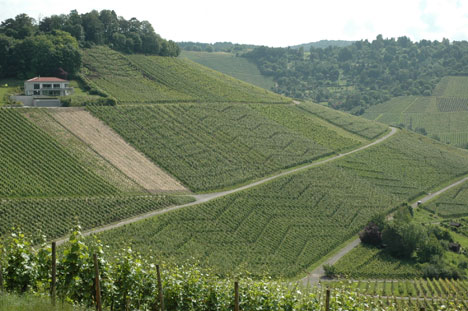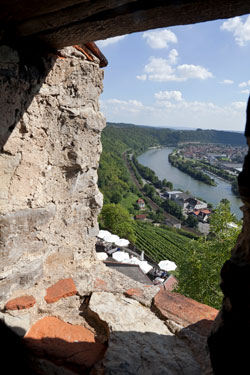With Riesling, Pinot Blanc, Pinot Gris, Pinot Noir and Lemberger, no fewer than five grape varieties are permitted for the Große Gewächs in Württemberg. Nevertheless, the number of wines registered annually in this category remains quite manageable. Only 15 wineries are members of the regional association of the VDP, and most of them do not actually produce a Großes Gewächs from all the approved varieties.
Württemberg is undoubtedly one of the regions in Germany whose wine quality has made the most remarkable progress in the last ten or 15 years. This is especially true here for the white wines. For a long time it was difficult to discern a reasonably clear profile in the Württemberg white wine scene. Only a few producers managed to produce wines with a clearly recognisable character of origin as well as enough substance and depth to keep up with their neighbours from Baden or the Palatinate. However, this picture has clearly changed. Wines made from Burgundy varieties no longer have to hide from those from Baden, and Rieslings are rarely In Focus in the public eye because there is a hundredfold competition in this domain from regions that are considerably more synonymous with Riesling than Württemberg. The wines would certainly be worthy of greater attention.
 |
| Vineyards near Stuttgart (Photo: DWI) |
If the white tops rarely stand out this year, it is also due to the vintage, which made it anything but easy for the producers. At the top of the 2010 Rieslings in the region are the Untertürkheimer Gips and the Fellbacher Lämmler from Gerhard Aldinger. Both are juicy, clear and firm - and, despite moderate alcohol, have enough substance and power for several years of development in the bottle. They are only slightly inferior to Ernst Daurtel's fine-juicy Bönnigheimer Sonnenberg, Karl Haidle's grippy and mineral Stettener Pulvermächer, and Graf Adelmann's Kleinbottwarer Süßmund, which is still somewhat undeveloped but quite detached. Gerhard Aldinger is also ahead in Pinot Blanc this year, while Rainer Schnaitmann leads the list of Pinot Gris by far with a rather powerful and melting example.
Württemberg is red wine country. A truism. And yet it is amazing what level the best Pinot Noirs and Lembergers have reached in the meantime. The latter in particular, which are only permitted as Großes Gewächs in Württemberg, have not only improved in quality in recent years, but have also undergone a striking change in style. The soft, accessible and pleasing wines of earlier years have now become much more serious, firmly woven, often cool and not infrequently mineral and characterful top growths. The 2009 vintage, at the latest, made it clear that it is now also possible to resist the temptation to produce overly powerful, overripe and wood-accentuated growths that are still all too often mistaken for great wines in Germany. Even the most powerful Lemberger of the vintage, Karl Haidle's Stettener Mönchberg, for all its power also has polish and bite and should develop excellently.
 |
| Hornberg Castle (Photo: DWI) |
The same applies to Rainer Schnaitmann's Fellbacher Lämmler, which is still barely accessible at the moment, and which can confidently be allowed seven to ten years to mature in the cellar and will probably still be a pleasure to drink in 20 years' time. Hardly less remarkable are the ripe, compote-juicy Lämmler from Aldinger and the compact Untertürkheimer Herzogenberg from Wöhrwag, who presents one of the best red wines of his career. The vineyard of Count Neipperg has two irons in the fire with the Neipperger Schlossberg and the Schwaigener Ruthe. We were particularly impressed by the tightly woven, tart, downright classic Schlossberg, but the Ruthe is also classy. In addition, there is an unusually warm and melting Verrenberger Verrenberg from Fürst Hohenlohe-Oehringen, as well as a concentrated Kleinbottwarer Oberer Berg from Graf Adelmann, with its bright fruit that seems almost Burgundian.
In the Spätburgunder category, Rainer Schnaitmann is also hard to ignore this year, and his very firm and mineral Simonroth R is also one of the top vintages in Germany. Gerhard Aldinger is also right up there with his Gips, followed by Graf Neipperg and the Staatsweingut Weinsberg, whose Gundelsheimer Himmelreich will probably develop into the best red wine in the company's history. Ernst Dautel and Fürst Hohenlohe-Oehringen follow closely behind.
The currently tasted Great Growths from Württemberg in the wine guide: